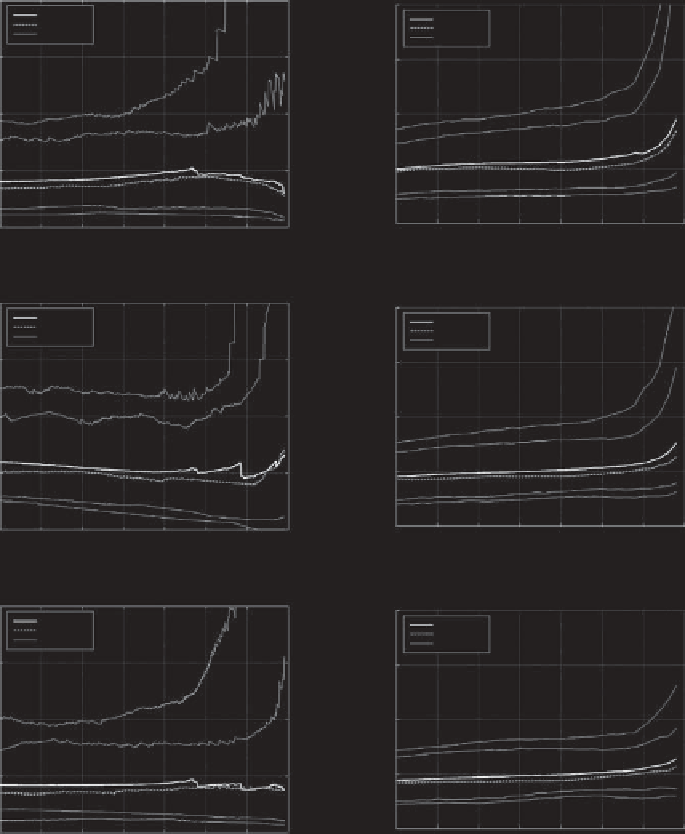Geography Reference
In-Depth Information
Figure 11.35. Error
-
duration curves
obtained by cross-validating the
regional approaches (ungauged
basins, left panels) and through a
resampling experiment (scarcely
gauged basins, right panels); mean
and median relative errors and bands
containing 75% and 90% of the
relative errors as a function of
duration. From Castellarin et al.
(2004).
Statistical approach
Record length (years): 1
3
3
Average
Median
Percentile
Average
Median
Percentile
2
2
1
1
0
0
-1
-1
0.3
0.4
0.5
0.6
0.7
0.8
0.9
1
0.3
0.4
0.5
0.6
Duration
0.7
0.8
0.9
1
Duration
Parametric approach
Record length (years): 2
3
3
Average
Median
Percentile
Average
Median
Percentile
2
2
1
1
0
0
-1
-1
0.3
0.4
0.5
0.6
0.7
0.8
0.9
1
0.3
0.4
0.5
0.6
0.7
0.8
0.9
1
Duration
Duration
Graphical approach
Record length (years): 5
3
3
Average
Median
Percentile
Average
Median
Percentile
2
2
1
1
0
0
-1
-1
0.3
0.4
0.5
0.6
0.7
0.8
0.9
1
0.3
0.4
0.5
0.6
0.7
0.8
0.9
1
Duration
Duration
graphical procedures), regardless of the differences
between the methodologies. In fact, the overall reliability
level does not seem to be associated with a particular
theoretical approach (i.e., statistical or non-statistical) or
computational procedure (e.g., utilisation of graphical
devices), but rather with the descriptiveness of the hydro-
logical information at hand (i.e., catchment descriptors
available for the study area). Thus, the results suggest that
one should select the most straightforward procedure, in
this case graphical or statistical.
Concerning the resampling experiment, the construction
of FDCs using a limited amount of runoff observations
outperforms all regional procedures even when using short
record lengths (i.e., 1 or 2 years): (i) regional procedures
can be effectively adopted for a preliminary identification
of candidate ungauged river basins with suitable water
supply potentials, and (ii) FDCs estimated for ungauged
sites with regional procedures should be validated on the
basis of the runoff data collected during a short measure-
ment campaign (i.e., 1 or 2 years), prior to a practical
utilisation.
The case study demonstrates that this FDC regionalisa-
tion approach can be very useful in ungauged or poorly
gauged basins to address societal questions, such as how
much water is available for irrigation, hydropower or urban
water supply. It also clearly demonstrates that even a very
short series of observations (be they old data or very
recently observed data) can greatly enhance the reliability
of the method. This is particularly important for developing
countries where no data, or only short and discontinuous
data series, are available, and where through a short field
campaign valuable information can be obtained.

Search WWH ::

Custom Search